They may be tall but Viv, Kay, and Wednesday are the littles of the giraffe herd. Their zoomies, curiosity and bold personalities breathe energy into the herd. Viv, Kay and Wednesday are besties and munch, nap, play and even train together. Each giraffe is at a slightly different level of hoof care training and blood draw training but they are all learning how to voluntarily participate in their own healthcare.
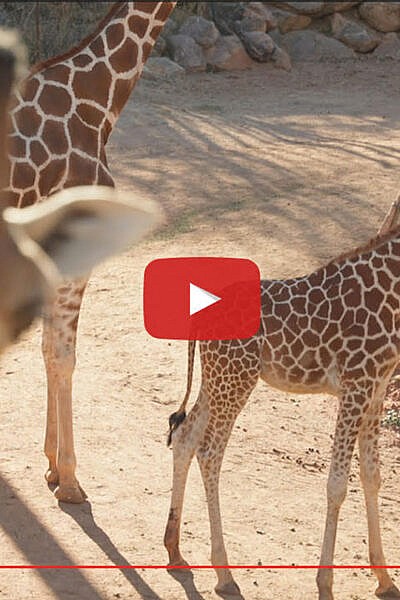

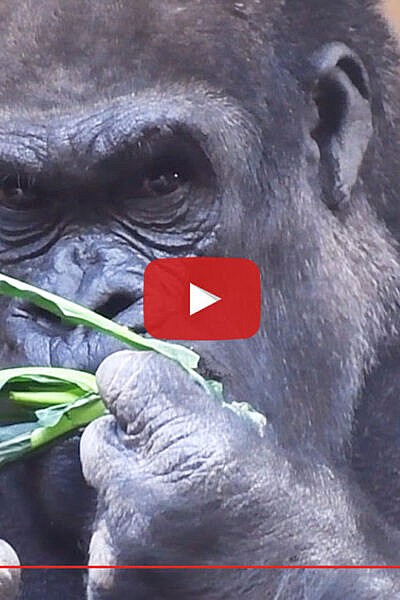

The harvest season looks a little different at Cheyenne Mountain Zoo. In 2021, CMZoo acquired its first shipping container farm, followed by a second in 2022. Currently, only a handful of zoos are working with hydroponic farming systems, like these. Being on the cutting-edge of this technology allows the CMZoo horticulture team to gather valuable data and conduct tests that contribute to the ongoing improvement of hydroponic systems and the production of top-quality produce.
While we will continue to run tests and collect data with our two current farms, the goal is to add more shipping container farms sourcing 50 percent of the lettuce for the giraffe feeding experience. An even longer-term goal is to grow 80 percent of lettuce for Zoo animals in farms like this one.
Visit the Cheyenne Mountain Zoo shipping containers across from Grizzly Grill during your next visit to CMZoo!
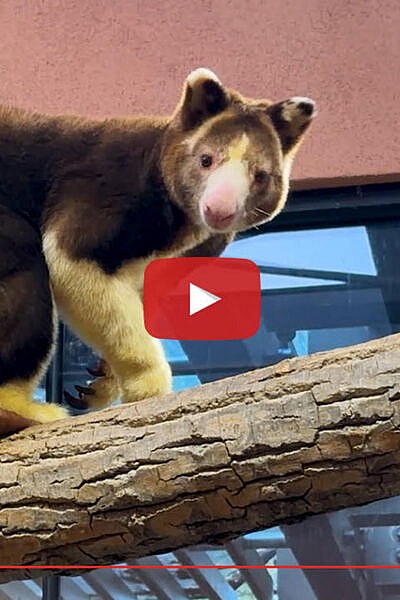

New tree ‘roo Som (pronounced like ‘roam’) is settling into her new home and building trust with her new keepers. Som is a 3-year-old female Matschie’s tree kangaroo who joined Cheyenne Mountain Zoo about a month ago.
Only about 2,500 Matschie’s tree kangaroos remain in the wild in their only known habitat: The Huon Peninsula of northeastern Papua New Guinea. Threatened by logging and mining exploration, the marsupial arboreal species is considered endangered by the International Union for the Conservancy of Nature (IUCN).
CMZoo supports the Matschie’s Tree Kangaroo Species Survival Plan (SSP) by providing homes and care for tree kangaroos that don’t have current breeding recommendations, like Som. While Som receives quality care, she’s also contributing to the conservation of her species by inspiring and educating guests.
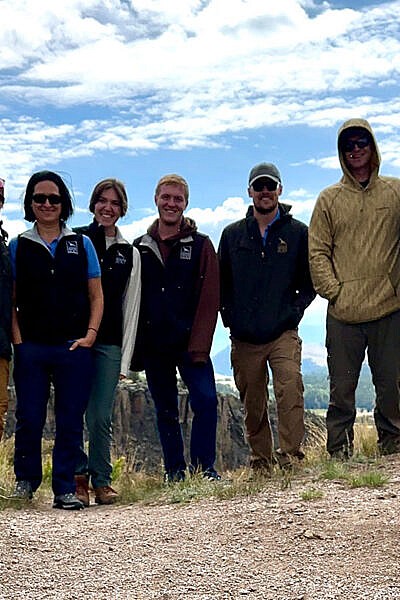

As a conservation organization in Colorado, water savings are high on the list of local preservation focuses for Cheyenne Mountain Zoo. Five CMZoo staff members and a CMZoo board member recently returned from a two-day trip to Del Norte in the Rio Grande Basin of Southern Colorado. There, they got to witness how water truly touches everything and everyone.
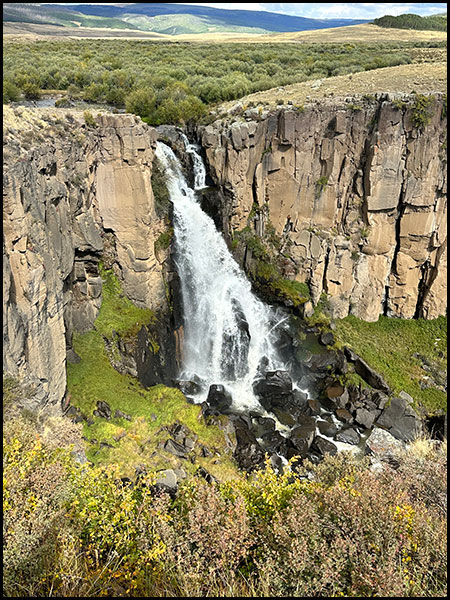
“The landscape and the community near the Conejos River are beautiful – and important to the survival of countless species of fish, plants, mammals and birds,” said Nicole Chaney, conservation coordinator at CMZoo. “Feeling the roar of Clear Creek Falls, witnessing the wildlife that rely on the river, and meeting the people whose livelihoods depend on it was really moving. The experience made us all the more grateful for our guests and members, who make the Zoo’s support for this effort possible.”
Earlier this year, CMZoo celebrated a huge conservation milestone reducing its water usage by nearly half, saving 13 million gallons of water per year. To offset its water usage, CMZoo also continued a commitment to Trout Unlimited, a nonprofit organization dedicated to the protection and restoration of habitat for animals that rely on our local rivers, which operates a program in the Rio Grande Basin of southern Colorado.
Under the program, Trout Unlimited arranges for releases of water from storage reservoirs to restore river flows for the benefit of fish populations and the riverine environment. Each year, CMZoo reviews its water use for the previous year and purchases that same amount of water, which is distributed to help restore stream flows in the winter months in the Upper Rio Grande Basin. This water is re-timed for winter releases, when normally the entire flow would be stored in reservoirs for future irrigation use in the summer months.
Trout Unlimited conducts complicated negotiations with water rights holders in efforts to get multiple uses out of that water. If the Zoo uses 20 million gallons per year, the Zoo purchases and restores flows by putting back 20 million gallons into the local waterways. Last year, the Zoo purchased 20 million gallons and spent $20,000 to offset that usage. Since the Zoo was able to reduce its water use by 4 million gallons in 2022, it will be purchasing 16 million gallons to restore to the waterways this year.
During their trip, the team visited reservoirs, water delivery facilities, and several streams where flows have been restored. In areas where winter flows have been restored, the surrounding areas have benefitted. If a stream stays flowing, it keeps the water table high, which has a dramatic effect on the landscapes the team visited, by improving the presence and health of vegetation that attracts the native wildlife back into this area. Flowing streams are very important for fish.
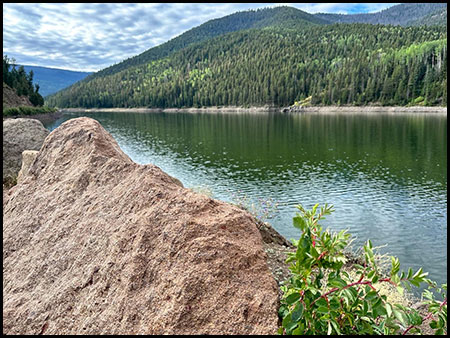
If flows are reduced in the winter months, fish have to crowd into small pools and compete for resources which affects their populations negatively and limits aquatic ecosystem productivity. In addition to its flow restoration efforts, TU also restores stream habitat in the area to provide healthier habitats for the fish during low flows. They also work with Colorado Parks and Wildlife to monitor the health of the fish populations in the basin.
“We learned that this basin is an important habitat for two threatened bird species,” said Chaney. “The Southwestern willow flycatcher, a federally endangered bird, and the Western yellow-billed cuckoo, a species of concern with declining populations, rely on these waterway habitats for their survival. Healthy rivers provide safe habitats, food sources and breeding opportunities for these birds.”
The team also learned about impressive conservation technology being used in the region that measures and controls water flows impressively accurately. Water rights holders can look at their smartphones each day for real-time data.
The region’s people, who are local stewards of this rich ecosystem, depend on the river for jobs, tourism and recreation. The town’s population triples in the summer months with tourists that make a huge impact on the local economy. The CMZoo team visited the Riverfront Project in Del Norte, Colorado – a large-scale renovation at a point in the river that flows through town. It was designed to facilitate recreation on the river including nature trails, picnic, swimming and fishing areas, and a “river wave” that people can surf or tube in.
Seeing the projects up-close left the team feeling inspired to continue their hard work in Colorado Springs, inviting people to visit the Zoo and inspiring them to take action to save wildlife and wild places. The Zoo is an exciting place to learn and make memories, and it’s an easy way for guests to contribute to reputable conservation efforts the Zoo vets and supports. All they need to do is visit the Zoo.
“Modern zoos act as links between frontline conservation organizations and the general public,” said Grace Sullivan, senior lead keeper at Water’s Edge: Africa, who went on the conservation trip. “Because of the number of people our animal ambassadors reach and inspire, we can help our members and supporters learn about and advocate for our shared conservation causes. This trip made a big impact on me, and I learned new ways to help connect our community to the Rio Grande Basin community, so we’re going to incorporate them into our education opportunities for guests right away.”
Every visit to CMZoo is conservation in action. Through the Zoo’s Quarters for Conservation program, which allocates 75¢ from every admission to frontline conservation efforts throughout the world, guests and members have raised more than $4.5 million since 2008. Annually, CMZoo members contribute $75,000 to smaller-scale staff-championed projects, and with additional conservation funds from Zoo revenue, CMZoo supporters help fund ongoing conservation partners, like Trout Unlimited.
“I hope our guests and members know what an impact they’re making for wildlife and wild places through this partnership,” said Sullivan. “We’re excited to bring back what we learned so we can inspire more members and visitors to continue supporting the Zoo as an easy way to continue supporting important work, like this.”
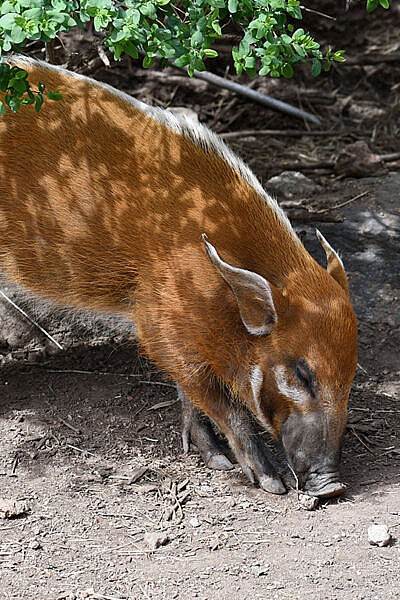

In the coming weeks, 9-year-old female Red River hog, Zena, will head northeast to Rosamond Gifford Zoo in Syracuse, New York. Her relocation supports the Red River Hog Species Survival Plan (SSP), with Zena moving as a companion animal.

To prepare her for the move, her care team has been refreshing her voluntary crate training, as Zena will be fully awake for the trip. Zena came to CMZoo from another zoo accredited by the Association of Zoos and Aquariums (AZA) in 2019, and quickly adapted to her new home with the support of her team. For this move, her keepers will also work with her new care team at Rosamond Gifford Zoo to make Zena’s transition go smoothly again.
“She was an excellent mother during her time with us here, and I know she’ll be a great companion and ambassador for her species in her new home,” said Brooke Powell, animal keeper in African Rift Valley at CMZoo. “We’ll miss her, but this gives even more people an opportunity to fall in love with Zena and Red River hogs as a species.”
Zena, whose keepers describe her as expressive, vocal, sweet and commanding, had two hoglets, Augustus and Pinto, with CMZoo’s late male Red River hog, Huey. Huey’s genetics were extremely valuable to the assurance population in human care, because his family line was relatively rare.
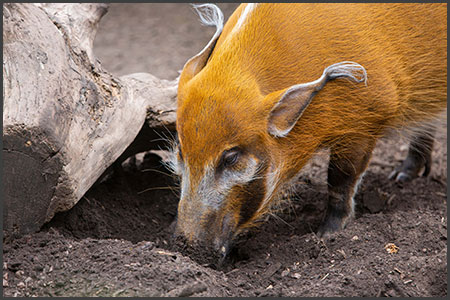
Now, it’s young Augustus “Gus” who has the breeding recommendation. Zena and Huey’s 1-year-old son, Gus, will stay at CMZoo. He’ll soon meet his first-ever potential mates: two 7-year-old Red River hog sisters from another AZA-accredited zoo.
“Gus is not quite mature enough to breed with the incoming sisters yet, but we’re hopeful they’ll be a good match when he’s ready in the next year or so,” said Powell. “Gus is used to living with other hogs, so we’re excited we can welcome the girls and introduce them as companions along the same timeline that Zena will be leaving.”
CMZoo has long supported the Red River Hog SSP by serving as a breeding facility. CMZoo has welcomed six healthy hoglets to the world since 2008, when Huey moved to the Zoo.
“It’s always exciting to contribute to a species by welcoming babies, but Red River hoglets are especially adorable,” said Powell. “They have these really cute brown-and-orange striped coats and tiny pink hooves, and they’re known for having zoomies almost nonstop.”
The African Rift Valley team is keeping their fingers crossed that Gus will help bring even more hoglets into the world in the coming years. According to the International Union for the Conservancy of Nature (IUCN) Red List, Red River hogs’ wild populations are decreasing. Guests who would like to wish Zena well on her travels to New York should plan to visit her when she’s outside with Gus in the Red River hog yard on warm and sunny fall days, before mid-November.
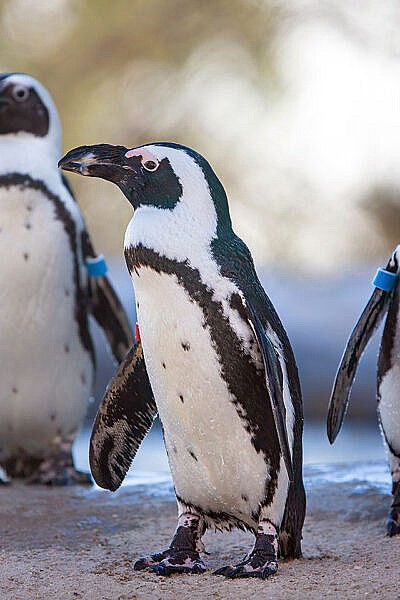

IN PARTNERSHIP WITH CHILDREN’S HOSPITAL COLORADO –
Just like people, animals’ diets play a huge role in their overall health. In addition to enrichment activities, training sessions and environmental elements that support animals’ mental and physical wellness, planning their daily meals is a major focus for animal care teams.
As the holidays roll around each year, many people are looking forward to gatherings centered around helpings of sweet and savory treats. Food traditionally connects people at the holidays, and celebrations can present opportunities to try new foods and stray from the diet and exercise routines that keep our bodies operating at their best.
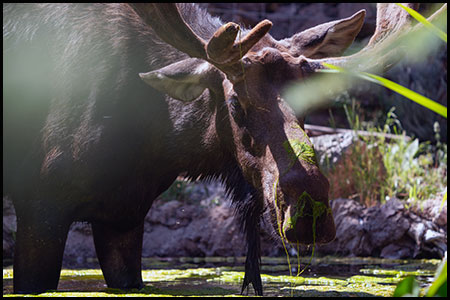
Our partners at Children’s Hospital Colorado offer advice for helping kids stay healthy during the holidays while enjoying seasonal or traditional treats and activities. CMZoo’s commissary, veterinary and animal care teams work together to follow similar practices to keep the animal residents at the Zoo healthy year-round.
Throughout the year, animal care teams lean on seasonally available items, like pumpkins in the fall or watermelons in the summer, to introduce novel foods to certain animals’ diets.
“The key is moderation, just like people practice around yummy holiday treats,” said Dr. Lizzy Arnett, CMZoo veterinarian. “It’s stimulating for our animals to receive novel foods, but we offer them sparingly and prioritize nutritious meals first.”
Just like humans, animals have individual preferences. That’s one of the things that makes keepers’ relationships with their animals so vital to each animal’s health and well-being. CMZoo’s African penguin flock is a great example of how species knowledge is supported by their care team’s connection with each individual.
Everyone knows penguins eat fish. Some might think that all penguins of the same subspecies would like the same kind of fish, but they would be wrong. The unique tastes of each CMZoo African penguin are on full display during daily penguin feedings in Water’s Edge: Africa. Guests can watch keepers offer four kinds of fish – herring, smelt, capelin and sprat – to accommodate CMZoo’s 16 picky penguins’ penchants.
“We usually know which type of fish to offer to each penguin, but changes in the seasons seem to inspire changes in their choices,” said Erin Henninger, Water’s Edge: Africa animal keeper. “For example, right now, Gary and Ichaboe like smelt, but they won’t eat herring. Safara and Rufaro are currently into herring, but won’t go near smelt. Most of the flock is choosing capelin right now and some will eat sprat occasionally. They have a hilarious way of telling you that you’re offering them the wrong fish. They shake their heads from side to side quickly or turn their faces away from it and wait – with intense side-eye stares – until you get it right.”
When a new animal arrives at CMZoo from another organization, its former care team is asked to provide an overview of its existing diet – main staples, favorite treats, high-value training rewards and things they don’t enjoy or haven’t responded well to in the past.
“To help a new arrival settle in, the veterinary team works with keepers and our commissary team to review their diet, order items we might not have and make any adjustments based on our experience with their species,” said Dr. Arnett. “Offering food to an animal is often a first opportunity to build a relationship, so we want to make sure they have their favorite treats and healthy meals.”
Again, it’s more important to support the animal as an individual, and not necessarily lean on what’s known about their species. Som, a female tree kangaroo who arrived at CMZoo last month, is a big fan of kale, so her keepers offer that leafy favorite as a way to calmly build trust with her during this foundational time. Tristan, CMZoo’s former male tree ‘roo who moved to Denver Zoo on a breeding recommendation from the Tree Kangaroo Species Survival Plan, despised kale. To each ‘roo, their own!
Atka, CMZoo’s 3-year-old male moose, arrived at Rocky Mountain Wild in July 2020 after being orphaned in the wild. He was only 8 weeks old when he came to CMZoo, so he was bottle fed by his keeper team. Although CMZoo had cared for moose before, he was CMZoo’s first nursing moose calf. Teams relied on the Association of Zoos and Aquariums network of expert knowledge and ever-evolving animal care science to create a formula and feeding schedule for the little guy.
“Currently, Atka’s diet consists of grain, some rye crackers for training, occasional algae from his pond, and a whole lot of browse, otherwise known as tree branches,” said Erika Furnes, animal keeper in Rocky Mountain Wild. “We’re one of the few zoos that is set up to care for moose, because we have a cooler climate, space to roam and swim, and a lot of native roughage.”
Atka’s team monitors his weight and body condition regularly, especially as he continues to grow. In the wild, moose snack on tree branches, bark, shrubs and aquatic vegetation. In human care, animal care teams provide items that species would eat in the wild and supplement with more readily available items, like grain. Moose are one of the few animals that eat pine needles, so guests will also see Atka snacking on the several pine trees in his habitat during the winter months.
CMZoo has a dedicated team of people who supply hundreds of pounds of browse daily for the various animals who need it. Browse, which includes tree logs, branches and leaves, is nutritious for many species. It’s also enriching for them to ‘work’ for their meals, by moving branches, stripping bark and chewing leaves.
Whether you’re gathering around a big bowl of leafy greens or snuggling up with a cup of hot cocoa, we encourage you to enjoy the holiday festivities in moderation – just like the animals at CMZoo!
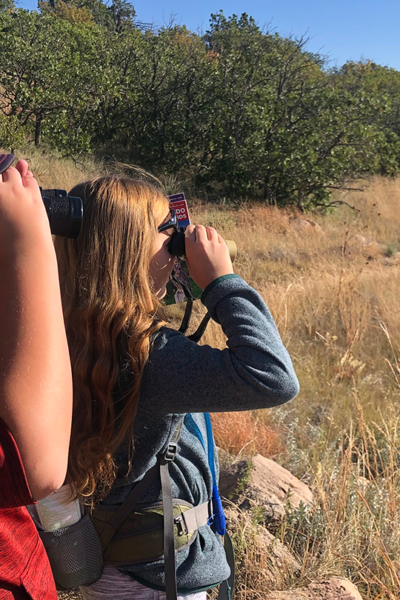

Teenagers interested in learning more about nature have a brand-new opportunity at Cheyenne Mountain Zoo. A 3-evening course, called Teen Naturalist Training, is tailored to nature-enthused teenagers – and its very first session is on Wednesday, October 11, 2023.
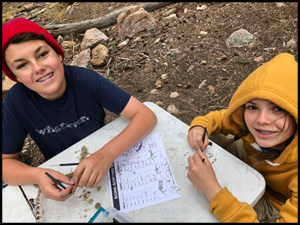
“Each evening, we’ll connect with the wild world through different educational experiences indoors and outdoors,” said Austin Kennedy, Extended Education Supervisor. “We’ll make wind chimes, press flowers, make clay imprints while we explore, discuss topics, and learn all along the way.”
During each 3-hour class, teens will learn about the natural world and gain a deeper understanding of Colorado’s wildlife and wild places, which could help future naturalists or nature hobbyists see if any of these specific topics spark a passion or interest in them.
The three-session training program will take a deeper dive into five topics:
- Nature Mentoring and Understanding the Role of a Naturalist
- Leave No Trace Methodology
- Colorado Plants
- Colorado Mammals
- Colorado Birds
Attendees can sign up for one, two or all three sessions, from 5:30 to 8:30 p.m. on Wednesdays, Oct. 11, Oct. 18 and Oct. 25, 2023. The classes are intentionally kept on the smaller side, with around 16 spots available each night. Longtime members of CMZoo’s Teen Program will attend the course as peer mentors to new attendees, so teens can learn from and relate experiences to each other, too.
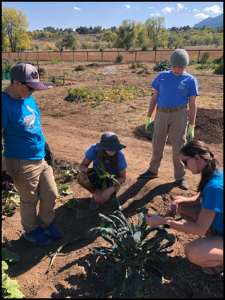
“If you’ve ever thought to yourself, ‘I’d really like to learn more about rocks, or birds, native wildlife, and how they work together.’ and you’re a teenager, then this is a great place to start digging deeper,” said Kennedy. “We’re excited to offer this uniquely focused training to teenagers in our community so they can see if these topics might lead to a calling as a naturalist.”
Kennedy and the CMZoo EdVenture team plan to add more opportunities for naturalist training for teens and adults. More information will be available at cmzoo.org/outdoorschool in the coming weeks.
The deadline to register for Teen Naturalist Training is Wed., Oct. 4. For more information and to register for one, two or all three sessions in the series, visit https://www.cmzoo.org/series/teen-naturalist-training-series-1-oct-11-18-25/.
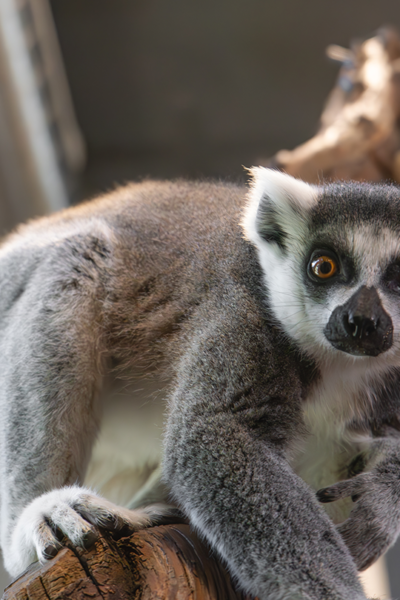

Ring-tailed lemur half-brothers, Elo and Maky, are preparing for a big adventure! They’ll soon join a bachelor group of nine ring-tailed lemurs at Brevard Zoo – an accredited member of the Association of Zoos and Aquariums (AZA) in Melbourne, Florida.
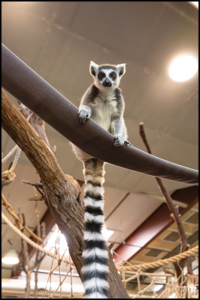
Ring-tailed lemurs are endangered, and wild populations are decreasing, according to the International Union for the Conservancy of Nature (IUCN) Red List. This move is in support of the Ring-Tailed Lemur Species Survival Plan (SSP), which manages assurance populations in human care to make breeding recommendations and achieve the highest possible genetic diversity among animals cared for by AZA-accredited organizations that support SSPs, like CMZoo. Rogue and Allagash, the two moms on Lemur Island, have both been recommended to breed again with Hercules.
“This is bittersweet, because of course we will miss Maky and Elo, but it’s an exciting opportunity to bring more of this endangered species into the world,” said Erin Henninger, animal keeper in Water’s Edge: Africa. “That’s why we exist as an organization – to save species and to inspire people to protect wildlife and wild places. Ring-tailed lemur babies are really good at inspiring people. It’s also an opportunity for their sister, Anja, who will hopefully be a mom someday, to observe her mom and aunt giving birth and raising young. She will likely help raise her future little brothers and sisters.”
In preparation for this move, the lemurs’ care team prioritized crate training. The goal is to make the lemurs comfortable entering, exiting and spending time in their travel crates, since they’ll be wide awake for their flight. The boys have mastered crate training, and even know how to close the crate door behind them.
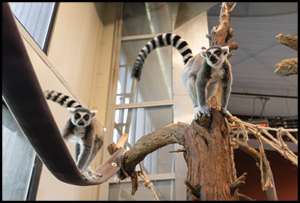
They have also learned a number of foundational voluntary behaviors, like shifting (moving to a location when asked), targeting (moving to a specific location and touching a target stick, so keepers can get a closer look at them), and injection training.
“We’ll work with their future keepers to relay their training knowledge, individual preferences – like favorite training treats – and behavior histories, so we can all best support them as they settle in,” said Henninger. “Both boys are really smart and eager to train, and they have good social skills, so we’re looking forward to seeing them embrace this next chapter in their development as young adults.”
Guests who want to visit Maky and Elo before their departure should plan a trip to the Zoo before mid-October. Stay tuned for more updates on Allagash, Anja, Rogue and Hercules by following CMZoo’s social channels!
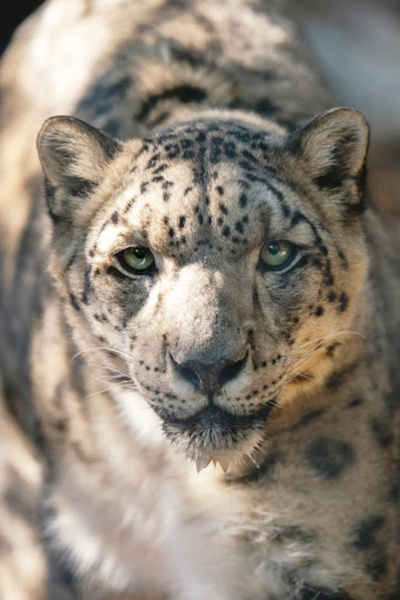

A snow leopard’s tail is an incredibly useful tool. About as long as their bodies, their tails act as a counterbalance, so they can make hairpin turns at lightning speed in the wild. When they’re pursuing prey in their native Himalayan Mountains, their tails act like an automatic rudder on a speed boat, instinctively correcting their course as they maneuver left, right, high and low with unbelievable speed and precision.
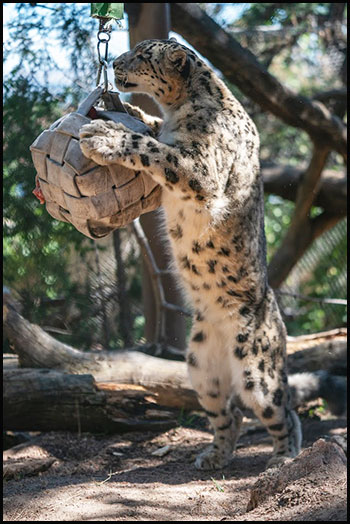
In between hunting excursions, their tails are super-fluffy heat sources that they wrap around their bodies – notably their noses and paws – to help keep them warm in their harsh native high alpine habitats.
Although Bhutan [boo-TAWN], 15-year-old male snow leopard at Cheyenne Mountain Zoo, isn’t traversing snowy mountains in search of dwindling food sources, or battling blizzards for a good night’s rest, his tail is still vital to his well-being.
“Especially for an older cat, he’s an agile climber and leaper,” said Jessi DiCola, Asian Highlands keeper. “His tail weighs about 10 pounds, so it’s fluffy, but it’s also really muscular. I think his tail has a lot to do with how well he can balance and interact with enrichment.”
It might be hard to tell from the fierce-and-bouncy disposition of 75-pound Bhutan, known as “Boots” by his keepers, but he has reached a distinguished age for a big cat. The median life expectancy of snow leopards in human care, according to the Association of Zoos and Aquariums, is 15.
As if Bhutan’s tail wasn’t already impressive enough, it recently helped his care team discover an age-related issue: kidney disease. Unfortunately, it’s quite common in older big cats (and domestic cats, too).
Because Bhutan was previously trained to participate in annual voluntary blood draws from his tail, his keepers and CMZoo’s veterinary team are hopeful they caught his kidney disease early in its progression.
How do you draw blood from a fully awake snow leopard? By asking him to let you hold his tail, of course.
To safely access his tail and to ensure Bhutan knows he is in control of his choices, Bhutan’s care team asks him to come into a special mesh training tunnel for blood draw sessions. The tunnel remains open, so Bhutan can walk away if he decides he’s finished with that training session.

One keeper sits at the very end of the tunnel, where Bhutan knows to position his rear end near the mesh between him and his keeper. As he’s facing forwards, another keeper sits on the other side of the mesh to his left, so she can communicate to Bhutan and reward Bhutan as the training progresses. The two keepers focus intently on Bhutan’s behavior, which is how he communicates his level of comfort throughout training.
Once Bhutan’s giant fluffy tail is in the right spot in the tunnel, his keeper opens a sliding port at the bottom of the mesh that allows him to safely swing his tail out to his keeper’s hands. (You can see Abuto doing a similar training in this video: https://www.youtube.com/watch?v=ddEcGMCZFDA).
“Boots is a total pro at blood draws,” said DiCola. “We’re watching for subtle signs, like a lip curl or tail flick, that tell us he’s close to getting uncomfortable. If we see that, we’ll pause immediately – before he gets uncomfortable – and wait until he shows us he’s ready again, or we’ll stop and try again later. The more we practice, the more comfortable all of us are.”
Bhutan’s kidney levels are elevated, but they’re not extreme at this point. There’s no cure for this kidney disease, unfortunately, so Bhutan’s team must focus on stopping it from getting worse for as long as they can. What they’ve learned from caring for Lomela and Abuto, African lions, is that managing blood pressure is key to slowing the progression of kidney disease.
“We know kidney disease is common in aging cats, and we have successfully monitored and addressed the same issues in our aging African lions for many years now,” said Dr. Eric Klaphake, head veterinarian at CMZoo. “We have been able to give Abuto and Lomela a good quality of life for longer than we might have thought. We hope that what we’ve learned from caring for them will also benefit Bhutan.”
Kidneys are the body’s filtration system. Blood moves through kidneys to be cleaned, and if blood pressure is high, it damages the kidneys as it moves through. Imagine how a trickle of water feels against your skin versus water coming from a high-pressure hose.
Because Bhutan was already well-versed in blood draw training with his tail, blood pressure training – also using the vein in his tail – was a breeze for the spotted scholar. Keepers followed a lot of the same steps to get him in the right position in the training tunnel, with his tail at the port, but Bhutan had to get used to a new sensation: a tail squeeze.
To do that, keepers placed a piece of cloth on the ground and positions Bhutan’s tail on top of it. Once he shows them he’s comfortable, they wrap the piece of cloth around his tail and pause to monitor his level of comfort. If he’s ready to continue, they pull the material more tightly around his tail to resemble the sensation of the blood pressure cuff.
“He has only been working on the blood pressure cuff training for a couple of weeks and he’s already ready for the real thing,” said DiCola. “We’re excited to start getting the real readings, so we have an even better idea of his overall health and what we can do to support him in his golden years.”
For now, Bhutan isn’t on any medications. His care team will increase the frequency of his blood draws to track how his kidney levels might be changing. If his blood pressure is high, his team will address potential changes to his diet or medications to help address it.
CMZoo will provide updates on Bhutan on the Zoo’s social media channels. Next time you’re in Asian Highlands, stop by and wish “Boots” well!
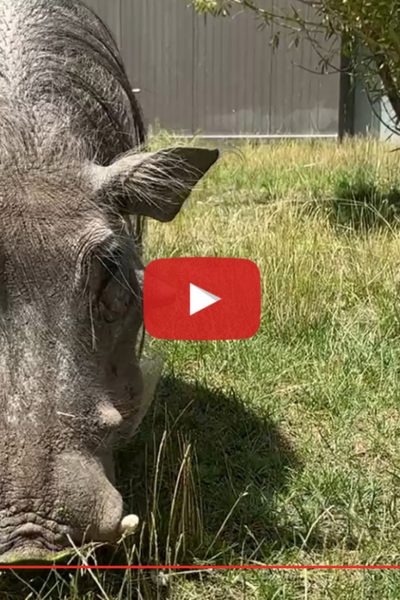

Alex, CMZoo’s 5-year-old common warthog, is one busy piggie. He’s great at training, enjoys wallowing in mud, melts into a nap when scratched, and sometimes goes on walkabouts with his keepers. Alex is even learning how to share space with hippos, Zambezi and Omo!
When Alex is outside, you can usually find him in the yard between Water’s Edge: Africa and Primate World. If you’re lucky, you might catch Alex on an afternoon walkabout in Hippo Plaza or hanging out with Zambezi and Omo in the main hippo yard, best seen from the rope bridge. These moments with Alex are not scheduled, so feel free to ask our staff about Alex during your Zoo visit.